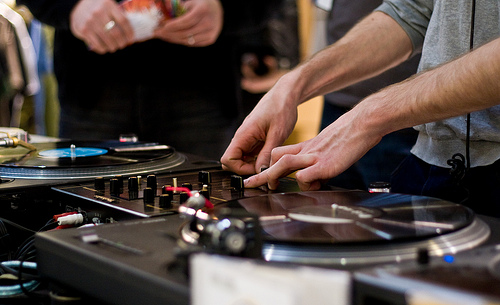If you’re interested in music in any way, one of the most intriguing aspects of getting involved is learning how to mix music. Whether on a record or in a club, it is likely that you’ve heard tracks mixed and wondered how on Earth it happens.

The good news is that it isn’t too difficult to do, and that with a little practice, you can become brilliant at mixing music. You don’t need to shell out thousands on mixing equipment, either. If you want to, you can use a computer software program to mix music for you, but the best sound engineers, producers, and DJs, prefer to use a mixing board and do it themselves.
However, whichever method you choose, the elements are very similar. If you’re just getting started with mixing music, it is likely that you’ll opt for a software program, so the advice here is based on these.
Knowing Music
The big thing you need to be able to do before you get started with mixing is identify different instruments and beats within music. Learn to pick up bass lines, drumbeats, and guitar rhythms before you start, and it’ll be much easier to learn how to mix music.
Stereo Mixing
When you mix in stereo, essentially you’re mixing for both of your ears, so can build sounds that are to be picked up by either ear, or both. Sounds complicated, but it’ll make sense as you start to mix your track with headphones on.
Drum Mixing
The drumbeat is the basis for all music, and should be the first thing you build into your mix. Drums usually work best when they’re centred, but as you build your mixing skills you might want to move certain elements, such as the high-hat or cymbal, to either side.
Bass and Vocals
With bass and lead vocals, you’re pretty much restricted to keeping these in the centre, otherwise your track probably won’t make much sense. Depending in the track and effects you’re trying to create, you can use backing vocals on either side as you start to build the depth of your track.
Guitar Mixing
This is where you can have a little fun, as the guitars give you a lot of license to get creative and play around with your mixing. It is often worth doubling up on the guitar sounds to create a more distinct and powerful track, but if you’re mixing for a band who’ll be playing instruments in a live situation, you’ll need to ensure you’re not putting too much into the track. If you go too far, you’ll be putting the band in a position where their live music sounds weaker than a recording, when most bands prefer the opposite effect.
Does it Work in Mono?
When you’ve mixed your track in stereo, listen to it in mono. You have no control over how a listener or a radio station, for example, might present the track; the last thing you want is for someone to listen to a mono track and for it to sound rubbish!
Once you’re started with mixing, it’s quite easy to put together. Make sure you’re checking everything as you go, and you’ll quickly be mixing great sounding tracks whatever the genre.
Image Source: canvascontent
Are you a guitarist? Check out our full range of online guitar lessonsAre you a saxophonist? Check out our full range of online saxophone lessons
Subscribe to Pro Music Tutor from as little as £7.99 per month
Related Posts
-
Why You Should Be Learning a Second Instrument
Learning your first instrument can sometimes feel impossible. Why on earth would you want to learn a second? I’m going to use this article to convince you that learning a second instrument is not only a great use of your time, but it may be better than spending time with your first instrument! Considering the […]
View All >> -
5 Easy-to-Learn Guitar Riffs to Impress Your Friends
When you’re first starting out learning how to play the guitar, it can be quite frustrating to stay motivated. It’s practicing the same chords, the same strumming and fingerpicking patterns, the same scales and songs over and over. It’s also pretty hard to impress your friends or girls with your noob skills, so ultimately you […]
View All >>
Latest Blog Entries
-
The Benefits of Online Music Education
Learning music has never been easier, since the internet and modern technological advancements have opened the doors to countless possibilities, expanding the subjects people can choose from and how the lessons are taught. Now, people can study a whole host of music-related topics; from learning to play guitar or DJing, to understanding the inner workings […]
View All >> -
Essential Jazz Guitar Scales that are Easy to Learn
Improvising in jazz requires the ability to play in different keys over different chords. Results certainly do not come overnight, but with diligent practice, you would be surprised by what you can achieve. Many people ask me about what scales I use as if they were some big secret. While knowing your scales is very […]
View All >>
Blog Categories
- Categories
- Guitar Tips (93)
- History (36)
- How-To (38)
- Interviews (3)
- Music Industry (121)
- Prolinks Guitar (2)
- Prolinks Lessons (3)
- Prolinks Tutor's Profile (1)
- Saxophone Tips (40)
- Uncategorized (6)
Tags
Archive
- November 2018 (1)
- February 2018 (1)
- December 2017 (1)
- November 2017 (1)
- October 2017 (1)
- July 2017 (4)
- May 2017 (2)
- April 2017 (1)
- August 2016 (2)
- July 2016 (1)
- June 2016 (2)
- May 2016 (3)

